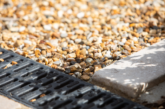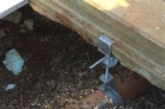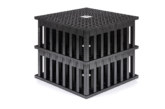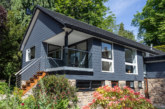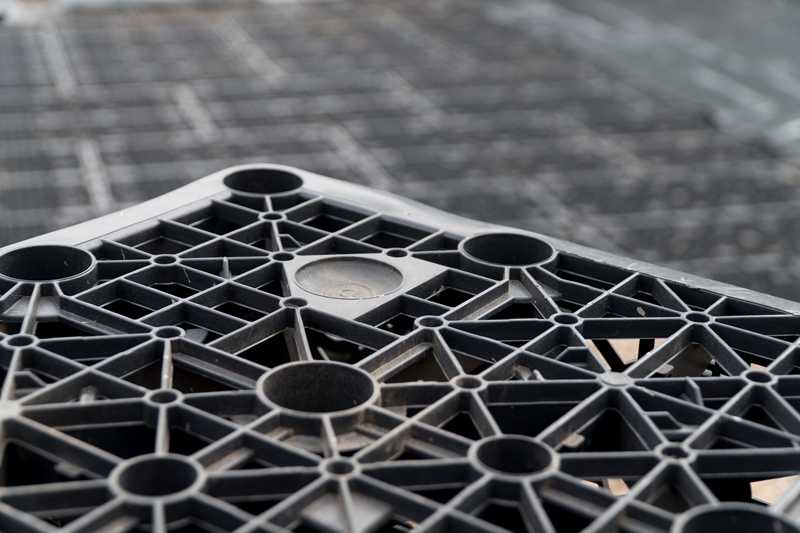
Paul Wadsworth, Brett Martin Specification Manager, explains how a Sustainable Drainage System can help alleviate flood risk by managing excess water where it falls.
The UK may have experienced one of the driest summers on record but the thought of flooding should not be far from people’s minds. Flooding is not restricted to the winter months. A parched landscape results in dry, compacted soils that will mean any rainfall is less easily absorbed into the ground. This will only increase the likelihood of flooding if the country experiences storms.
With recent years showing us all the devastating effects that floods can have on people’s lives, we need to consider how we build new homes to address this risk. Sustainable Drainage Systems (SuDS) offer developers and housebuilders a way to manage excess stormwater on their developments.
The pressing need for more homes has led to us to build on more diverse land and urbanise our green spaces. As these developments go ahead, there is a knock-on effect as we have less land for rainfall to be able to soak away into the ground. It is imperative that water is managed where it falls, reducing the demand on built drainage and the sewerage infrastructure.
Planning guidance requires all major new housing developments of 10 houses or more to incorporate SuDS for the management of surface water run-off. However this doesn’t apply to smaller developments or the retrofitting of SuDS in urban environments.
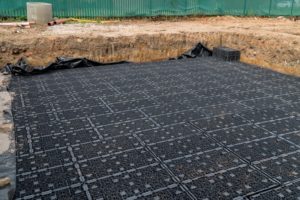 An integrated solution
An integrated solution
By taking a SuDS approach to managing water, housebuilders and developers can manage the risk of surface flooding, integrating these solutions into developments, whilst at the same time influencing other aspects of the site and reducing impermeable areas wherever possible.
Sustainable drainage mimics natural drainage processes by allowing rainfall to soak into the ground where possible or by delaying discharges. Reducing both the volume and rate of surface water run-off to sewers and watercourses, this helps to improve water quality, ecology and amenity value of watercourses. It is important, however, to remember that there is no single drainage solution for any one site.
There are a number of options from natural above ground SuDS solutions including swales, detention ponds, basins and permeable surfaces, to engineered solutions such as concrete culverts, plastic pipes, attenuation tanks and soakaways.
Faced with rising costs and stricter deadlines, modularisation is growing in popularity as contractors look to find the next generation of efficient and economical products and systems. Due to the numerous benefits both on and off site, underground modular geocellular units such as StormCrate from Brett Martin Plumbing and Drainage have become an increasingly popular choice at every stage of the supply chain, from the architect and specifier to the contractor and client.
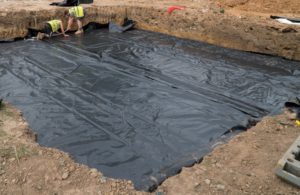 Modular and stackable
Modular and stackable
Weighing in at only 18kg per module and measuring 1200 by 600 by 420mm, the StormCrate modular units can be easily lifted by hand and then laid or stacked in rows. The units are suitable for a range of applications including residential, commercial and industrial projects.
StormCrates can either be wrapped in a geotextile, which allows stored water to slowly seep into the surrounding ground and back into the water table, or a more common practice, wrapped in an impermeable geomembrane to create a sealed underground tank. The outlet from this tank is then controlled to facilitate a slow release of the stored water back into the drainage system over a longer period.
Manufactured from recycled plastic, StormCrates have a high void ratio of 95% which means that the units are highly efficient at storing up to 300 litres of water in the event of heavy rains. If an inspection is required for future maintenance, then Brett Martin can offer StormCrate Inspect Crates.
There are no limits on the use and design of the surface over the system and StormCrates may be successfully installed under parking areas, driveways and landscaped areas. Ideal for domestic soakaways – only 250mm of cover is required above the crates for driveway applications, which results in less dig and site spoil. When a minimum of 500mm cover is used, the high strength crate has a lorry bearing capacity of 60 tonnes.
Case study
For a new housing development in Coventry, surface water management was a key consideration to prevent any future flooding. Brett Martin’s StormCrates were used to create an underground attenuation tank for the temporary storage of stormwater, reducing the demand on built drainage.
There are no limits on the use and design of the surface over the system and StormCrates may be successfully installed under parking areas, driveways and landscaped areas.
The development of 15 new homes – a mixture of two, three and four-bed semi-detached terraced and detached houses – was built on an area which is susceptible to flooding. In order to manage rainwater within the site and prevent flooding during periods of bad weather, contractor O’Flanagan Homes, required a drainage solution that could be integrated within the site.
Brett Martin provided O’Flanagan Homes with 180 StormCrates which were used to create a 54.5m3 underground storage tank, constructed in three layers at a depth of 2 metres beneath the entrance road, to offset stormwater run-off from the developed area.
Commenting on the installation, Danny O‘Flanagan of O’Flanagan Homes said: “We have used StormCrates on other projects and they are an ideal solution for managing stormwater run-off. Lightweight, easy to move and incredibly strong, we used them to create an underground tank beneath the permeable paving in the entrance road of the development.”
The use of StormCrates from Brett Martin Plumbing and Drainage ensured this new housing development had a proven rainwater attenuation solution which will reduce demand on built drainage and the sewerage infrastructure.


